Introduction – What Is Solar Power And Advantages and Disadvantages of Solar Energy
Solar is a big investment so you want to make sure you get it right by having good information about location, orientation, payback, panels and inverters. We go through the facts you need to see if advantages and disadvantages of solar energy make sense for you.
The considerations in this article remain valid even though it was originally written in 2012. What has changed by now, i.e. 2022 are details about feed-in tariffs, net metering rates, and solar tax credits.
For example feed-in tariffs have substantially shrank over time which makes it harder to make back the solar panel investment cost. On the other hand, new tax credits depending on policy changes make investments cheaper. Therefore, as before, these concepts will require you to do extra homework to find out what applies still and what has changed.
The Main Components Of A Solar Power System
The main components of a solar power system are the solar panels themselves, the inverter which converts from direct to alternating current, an isolating switch, a solar meter, and then a net meter for where it meets the grid.
At night, when there’s no sun, the home has the option of switching to the electrical grid or drawing power from a battery. A home battery system is quite expensive but there are battery leasing options too.
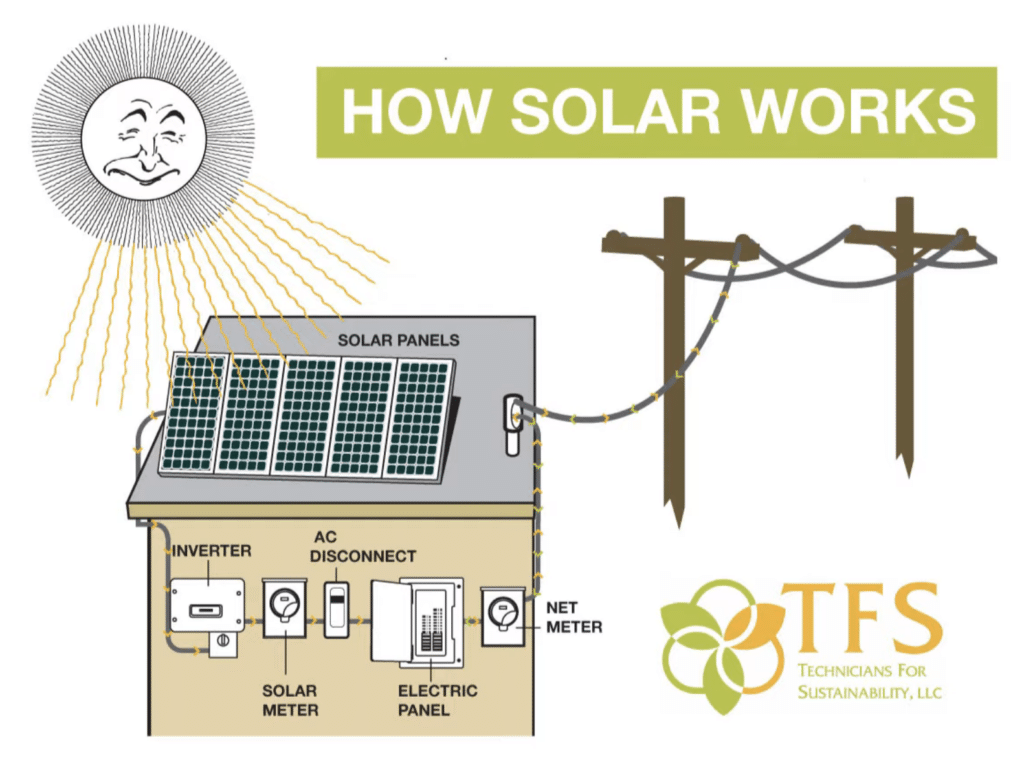
Solar panel systems in a home require batteries to store the energy produced by the solar panels. Batteries are an essential part of a solar panel system, as they allow for energy to be stored for later use. This is especially important for solar panel systems that are not connected to the grid, as they need to be able to store energy for use when the sun is not shining.
There are a few different types of batteries used in solar panel systems, including lead-acid, lithium ion, and nickel-cadmium batteries. Each type of battery has its own advantages and disadvantages, so it’s important to choose the right type of battery for your solar panel system.
Lead-acid batteries are often the most economical choice, but they are not well-suited for deep cycle applications.
Lithium ion batteries are more expensive, but they are more efficient and can handle deeper cycles than lead-acid batteries.
Nickel-cadmium batteries are also well-suited for deep cycle applications, but they are more expensive and require more maintenance than the other types of batteries.
The Level Of Sun In Your Area Determines How Much Power You Make
The sunnier where you live, the more solar power you’re going to make. This may seem obvious, but it’s really important because not only will you make more electricity, but you may also be using a lot of electricity for air conditioning loads, so it’s a really good match in hot places to get the best performance out of your solar panels. Here you have a choice as well, air duct centralized AC, high velocity AC, and mini-splits have performance and efficiency differences.
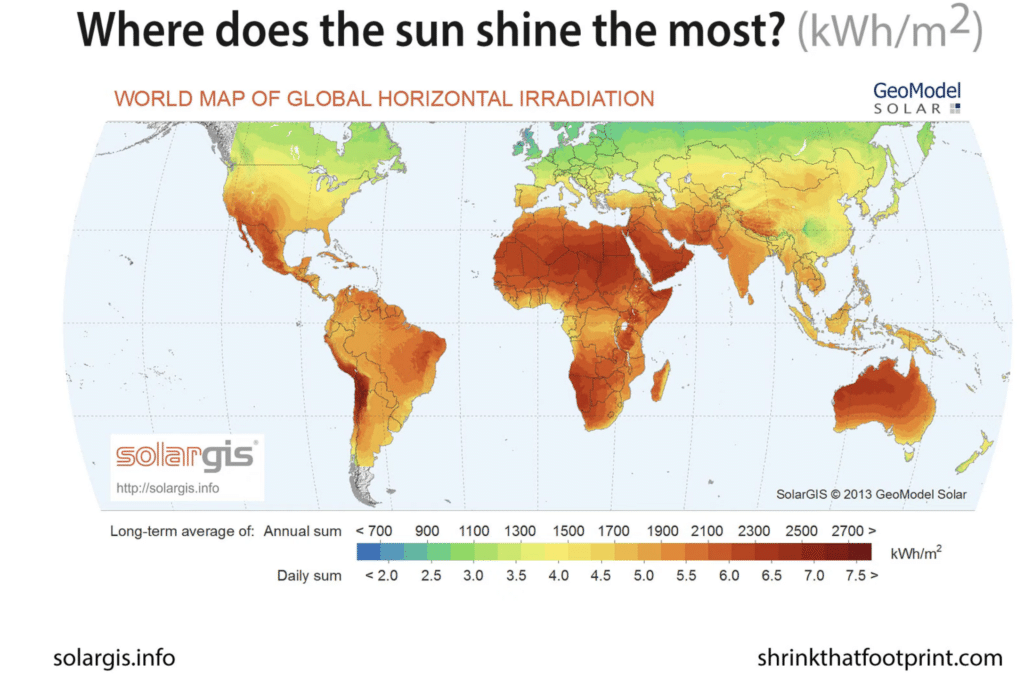
You need to face them towards the rotation of the sun. In the northern hemisphere that means facing south and on the southern hemisphere that means facing north, as we can see in this orientation chart from the UK. It doesn’t matter if you vary a few degrees off north or south as long as you’re in that general direction. If you have to choose between the two pieces of roof that face more east or west, then often go for the west because it aligns well with your afternoon electricity peak.
From the above map, the hottest places get 7.5 kWh / m2 whereas the lowest would get less than 2.0 kWh / m2 of sunlight. Solar panels have low efficiency around 15%. This makes enough energy for each panel in the range of 0.3 kWh / m2 – 1 kWh / m2. String ten 1 m2 boards together and you would have, in the best of circumstances, a 10 kWh / m2 power generation capacity, or a 10 kW system.
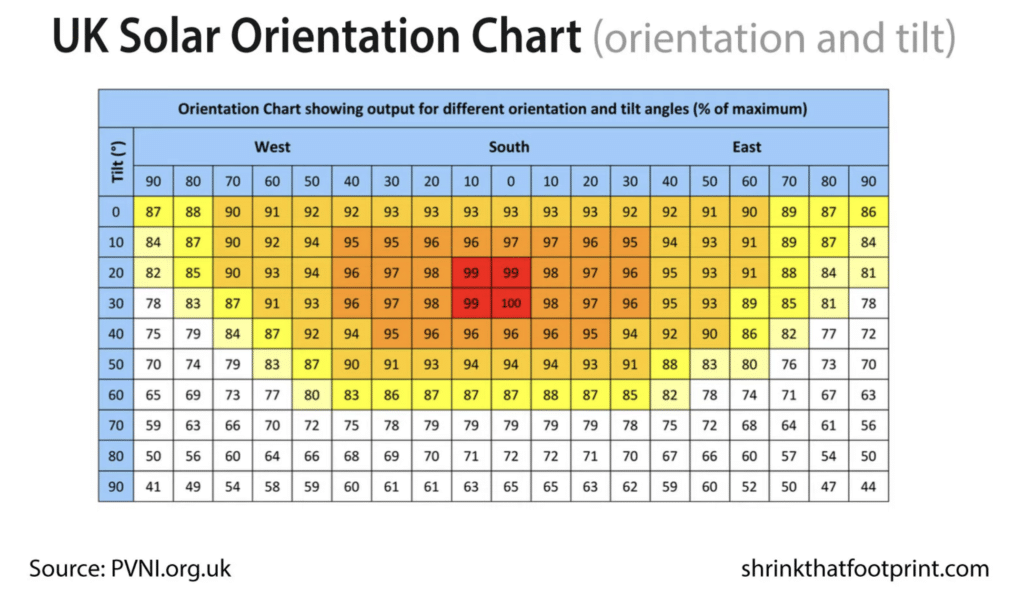
Generally, in terms of tilt, the ideal angle is about 85% of your latitude, which means at the equator you want to be quite horizontal, whereas further away from the equator it gets steeper and steeper.
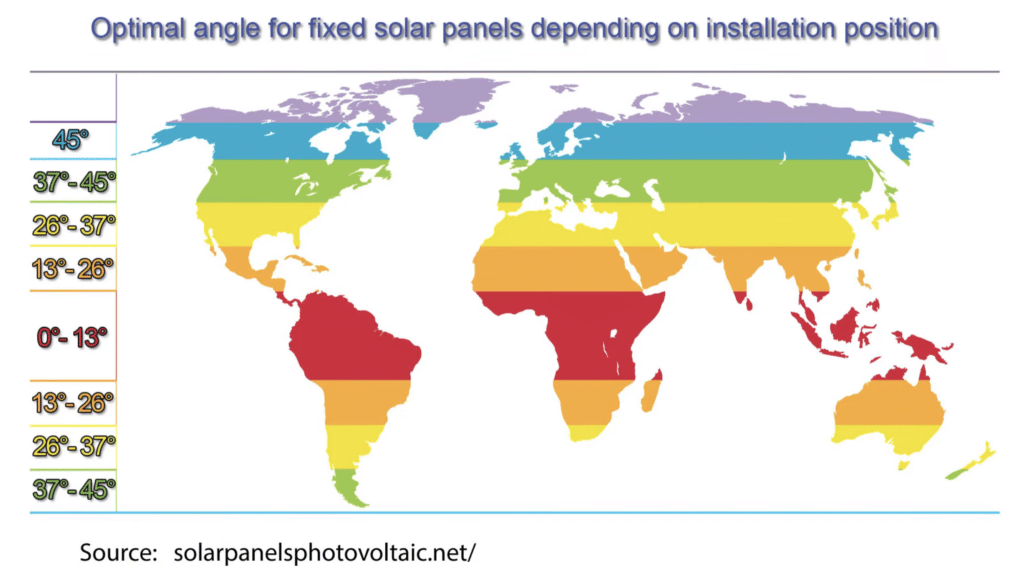
Because of the sharp falls in solar module prices, the cost of solar systems is falling dramatically in the last few years. Although you can make estimates from data you’ll find on the web, it’s not until you get a few quotes that you’ll have a rough idea of what the market holds in your area. An important way your system can make money is when you sell unused electricity back into the grid at a price.
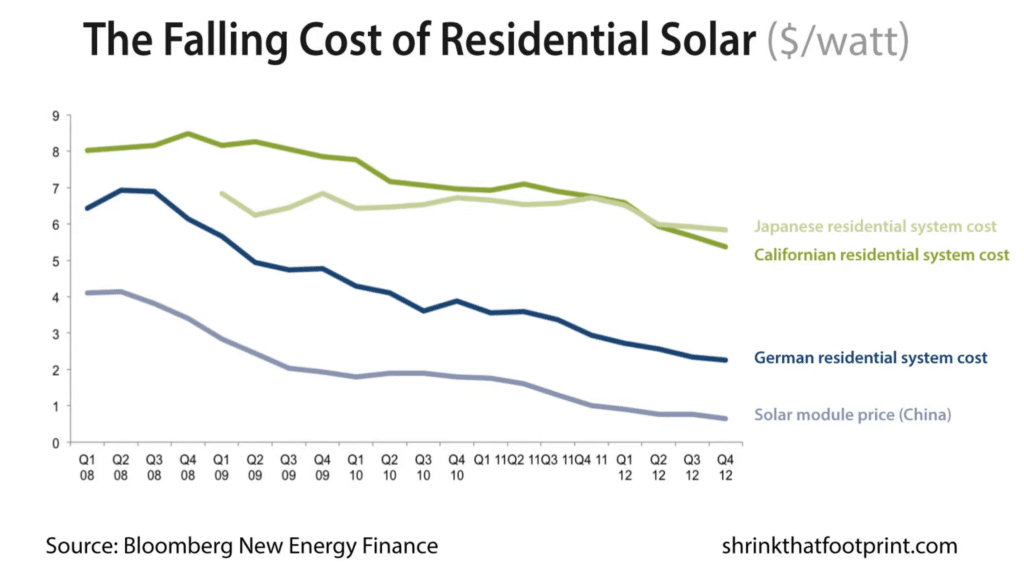
In some places, the feed-in tariff is for the total amount you generate while in other places it’s just for the extra amount you put back into the grid. You need to research your feed-in tariff policies locally because as you can see between these graphs in Germany and Australia, they can vary dramatically depending on local policy.

In some countries there are handsome tax credits available to reduce the net cost of going solar. In the U.S., for example, the federal government offers a tax credit of 30% of the cost of a solar system. In particular, you can sometimes get both a state and a federal level tax credit which will reduce the cost dramatically.
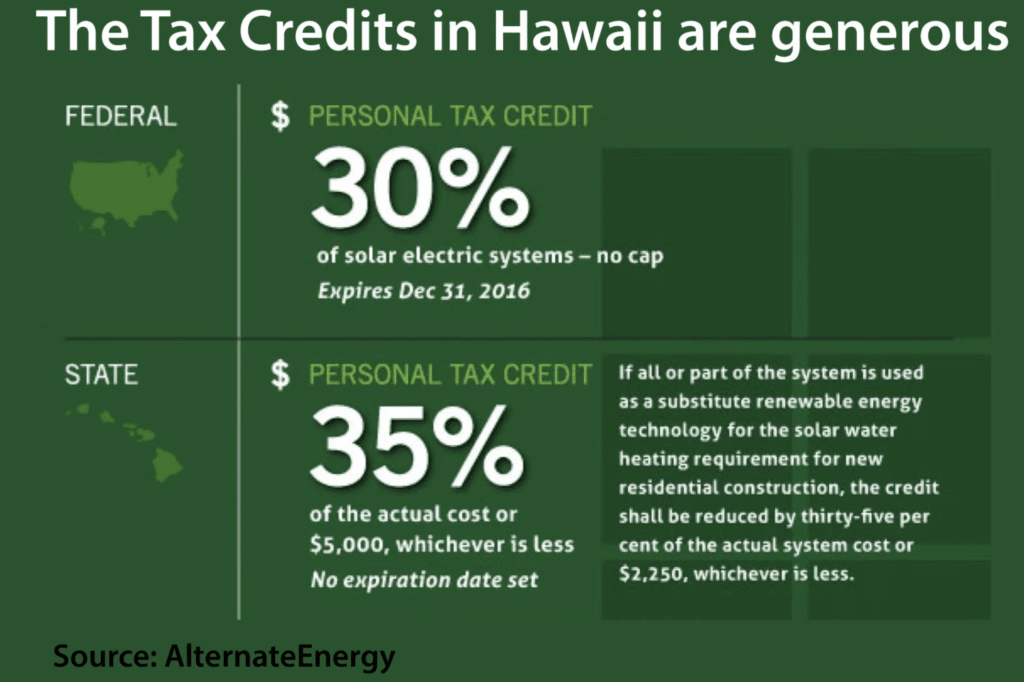
The more that you pay for grid electricity then the more potential benefit you’ll have from using solar to displace that electricity. If we look at electricity prices around the world it helps to explain why some of the early solar movers like Germany, Spain and Italy installed so much despite not having the best solar resources.
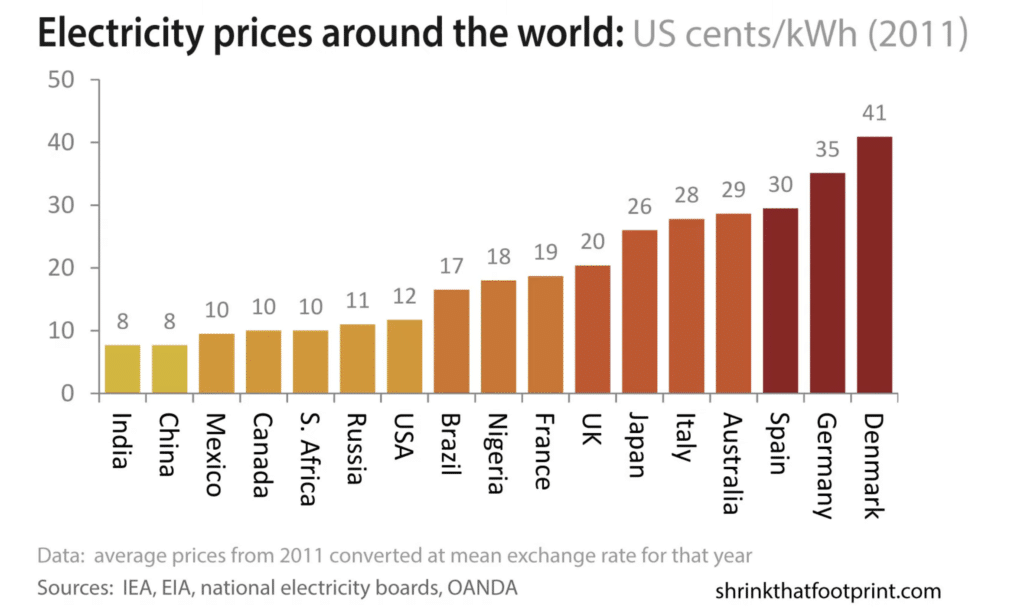
If you are at some point looking at a payback calculation I’d really recommend you look at the assumptions of how much of the electricity you’re going to use, how much electricity prices are going to increase over time and what your opportunity cost of capital is. I’m just going to give you three examples to show you why these assumptions matter so much.
Today, you’re using an excellent solar calculator from Solar Quotes. This first chart shows you what effect changing the assumptions about how much of the electricity generated you will use has on both the internal rate of return and the payback in yellow. If you look from left to right, you’ll see that using only 10 percent of your electricity, the payback is up to 14 years. Whereas, if you’re using 70 percent of your electricity, it’s down to eight years. We get a similar but less pronounced effect for electricity price inflation with slow rising prices at 2 percent on the left.
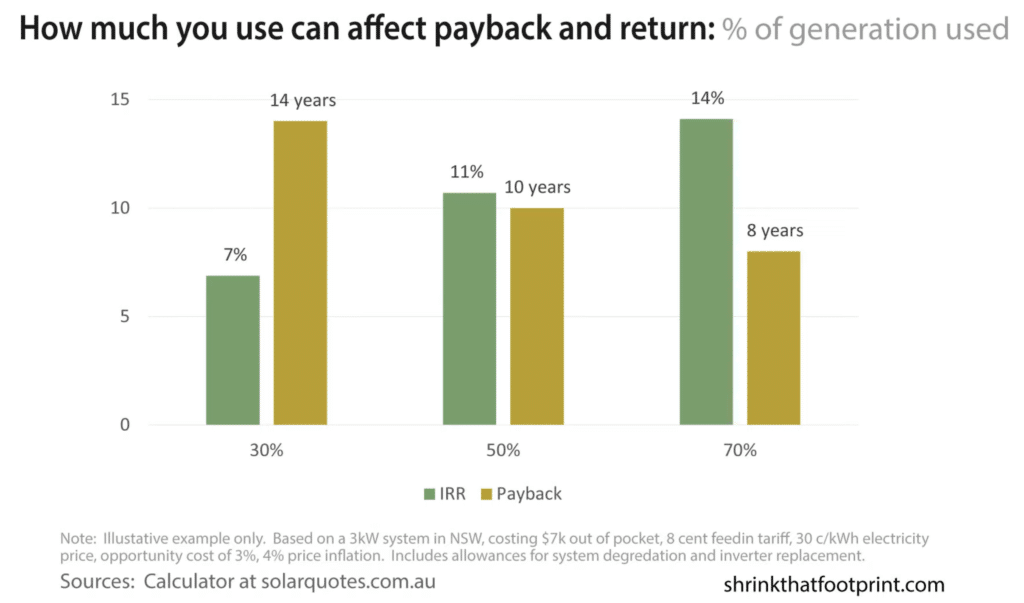
It’s a 10-year payback, whereas fast rising prices of 7 percent is down to eight years. And finally, many calculators don’t account for the opportunity cost of capital, where you could have burned some money by not investing in solar. With an opportunity cost of 6%, you’ll see that the payback is up to 12 years, whereas with no opportunity cost of capital it falls down to 7 years.
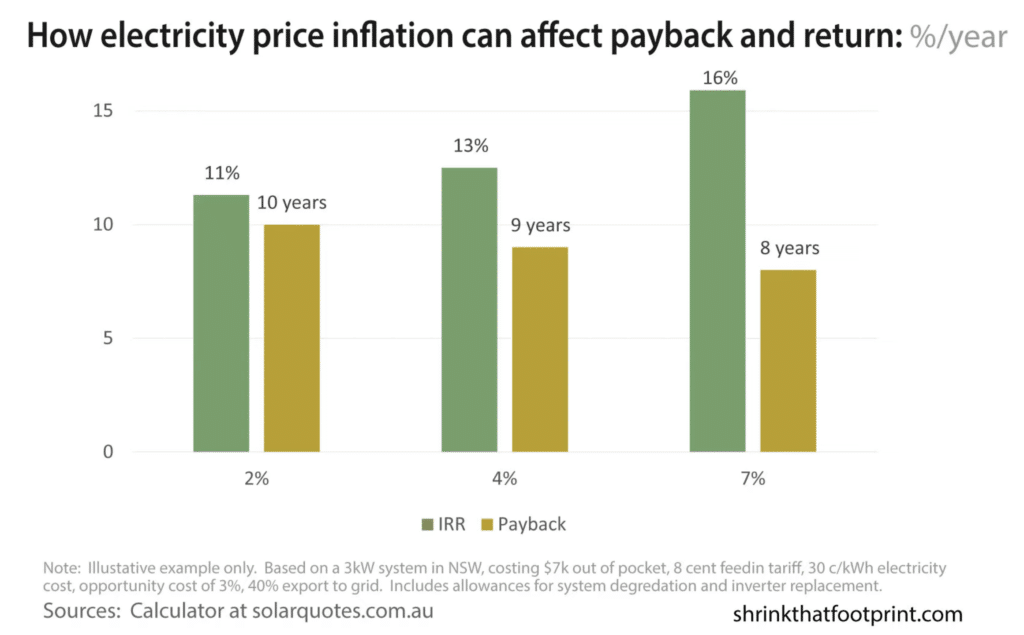
One thing that people often forget to think about is how getting solar panels will affect the value of their home. This is particularly important if there’s any chance you’ll sell your home in the next decade or so. Studies from the US show that solar panels can add around 3 to 4% of value to a home. But let’s be honest, there’s a massive difference between attractive solar panels and really ugly solar.
Looks are not the only concern when the roof is modified. One valid concern, though moderated by having skilled installers, is the possibility of roof structural damage by heavy solar panels.
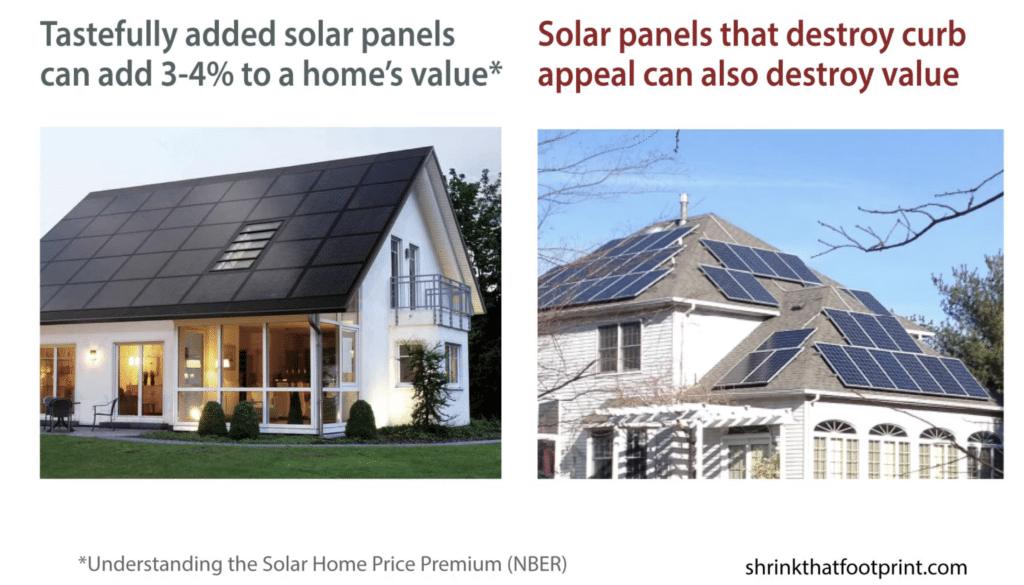
Depending on where you live in the mix of generation technologies on your grid, going solar is going to save a dramatically different amount of carbon. Cutting carbon is your main criteria, then there are lots of more cost-effective ways of reducing emissions than solar.
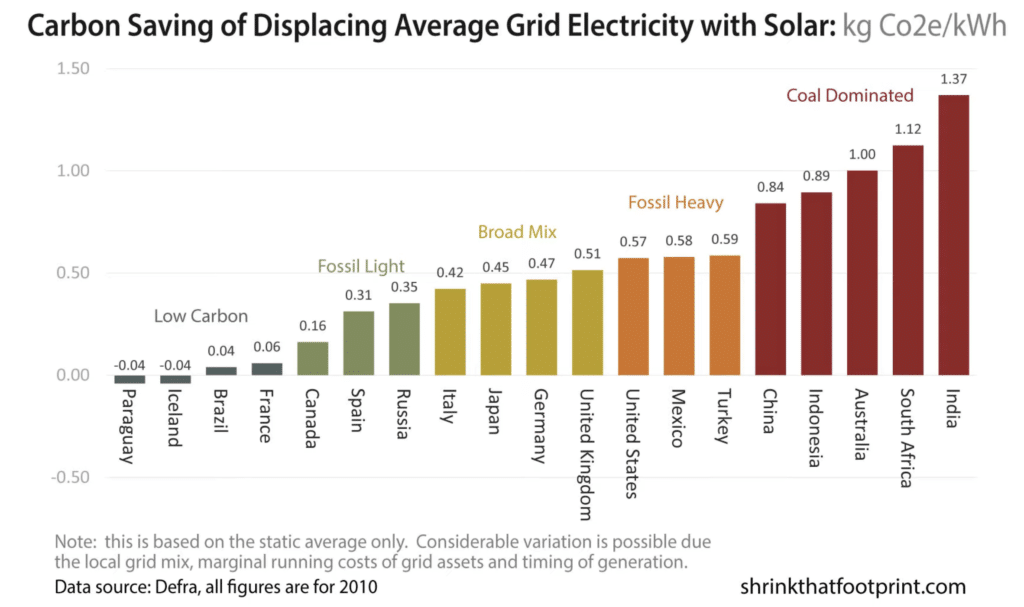
You need to know that your solar panels are going to be decent because you don’t want to have to replace them in a few years. The best way to find out if you’re getting a decent solar panel is to check if there’s any third-party laboratory testing of your panel and to see how its performed. The Californians do an excellent job of testing panels and you want to check if the performance ratio on your panel is over 90 to make sure you’re getting what it says on the tin.
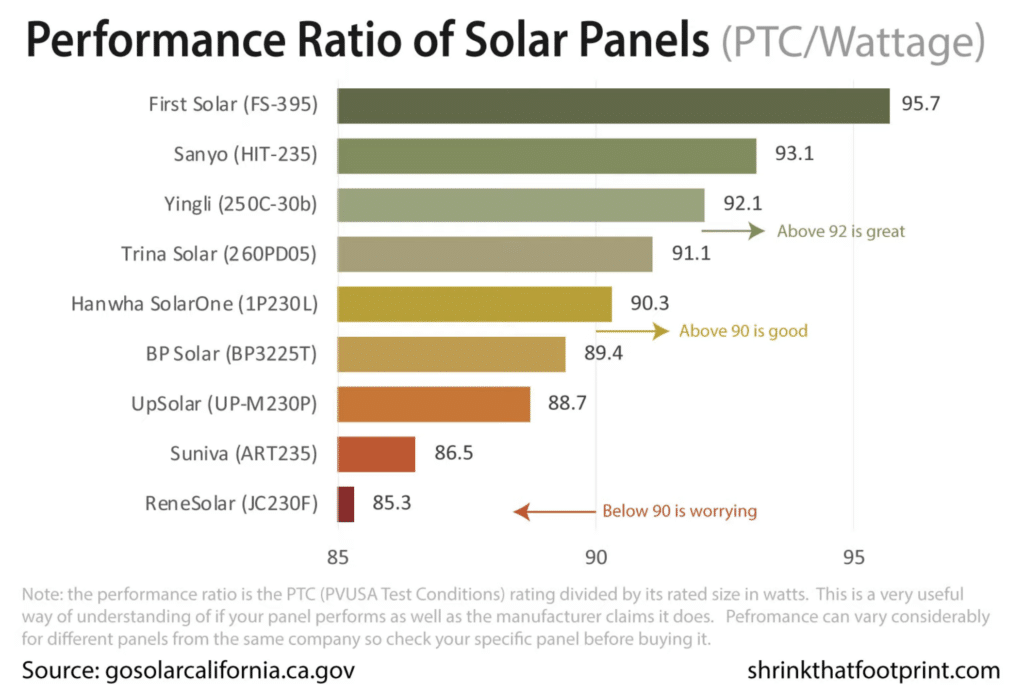
As of 2013, seven of the world’s top 10 solar panel manufacturers were based in China, so there’s no problem getting a Chinese panel. You just want to make sure you get quality.
The most likely element to fail in a solar power system is the inverter. It is important to pay a little more to get quality and make sure there is a proper warranty. A good inverter should be from an established brand, have an efficiency of more than 95%, and have a warranty of at least 10 years. The top European brands, like SMA Power One and Xantrex, make great inverters. If you’re looking for a good quality Chinese inverter, then things like Robot and Sungrow are also decent these days. Also, if your solar array is likely to receive any significant shading, then you should investigate whether micro inverters might be a better option for you because they’ll stop the entire string of panels dropping down to a lower wattage.
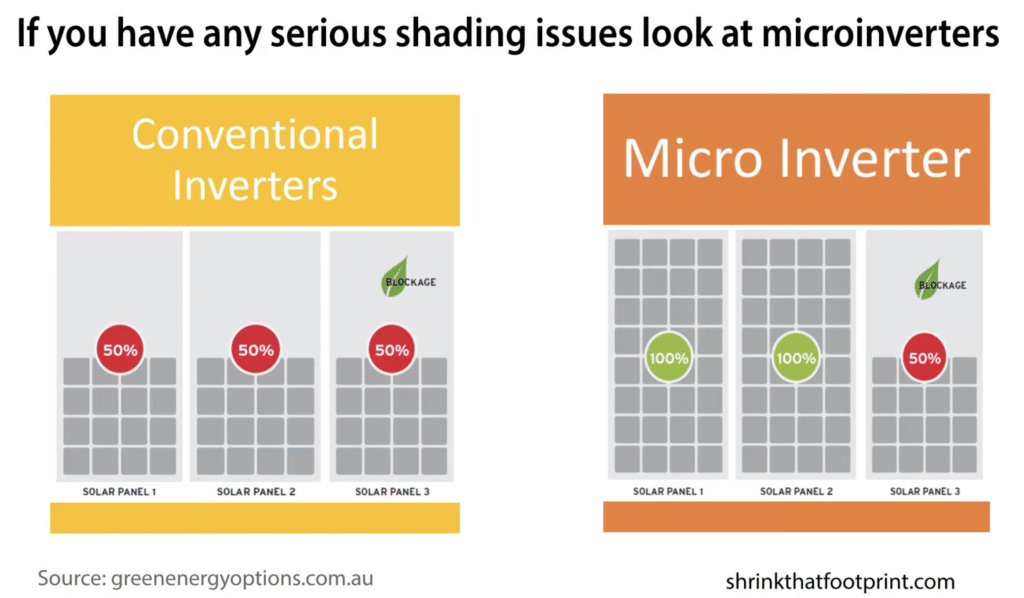
If only part of the roof is shaded, if you’re up to the point of getting some solar quotes, then it’s worth jumping on the web to see if you can find any unbiased reviews of suppliers in your area. Also, you should never underestimate the willingness of your neighbors to talk about their solar panels, so if you’ve got a neighbor and you talk to them and find out that they had a good experience, then you should check out who this is why it was solar power is an expensive investment and like any expensive investment it makes sense get multiple quotes. I really recommend you should get a minimum of three quotes.
I went with the most expensive quote because it had better panels and a better inverter. I also had a lot of confidence in the company. If you go solar, make sure to keep a document file of everything in case you have a problem or sell the house. The five most important things to keep are the original quote, the panel warranty, the inverter warranty, the MCS installer certificate, and your registration for the feed-in tariff.
Lindsay Wilson
I founded Shrink That Footprint in November 2012, after a long period of research. For many years I have calculated, studied and worked with carbon footprints, and Shrink That Footprint is that interest come to life.
I have an Economics degree from UCL, have previously worked as an energy efficiency analyst at BNEF and continue to work as a strategy consultant at Maneas. I have consulted to numerous clients in energy and finance, as well as the World Economic Forum.
When I’m not crunching carbon footprints you’ll often find me helping my two year old son tend to the tomatoes, salad and peppers growing in our upcycled greenhouse.
